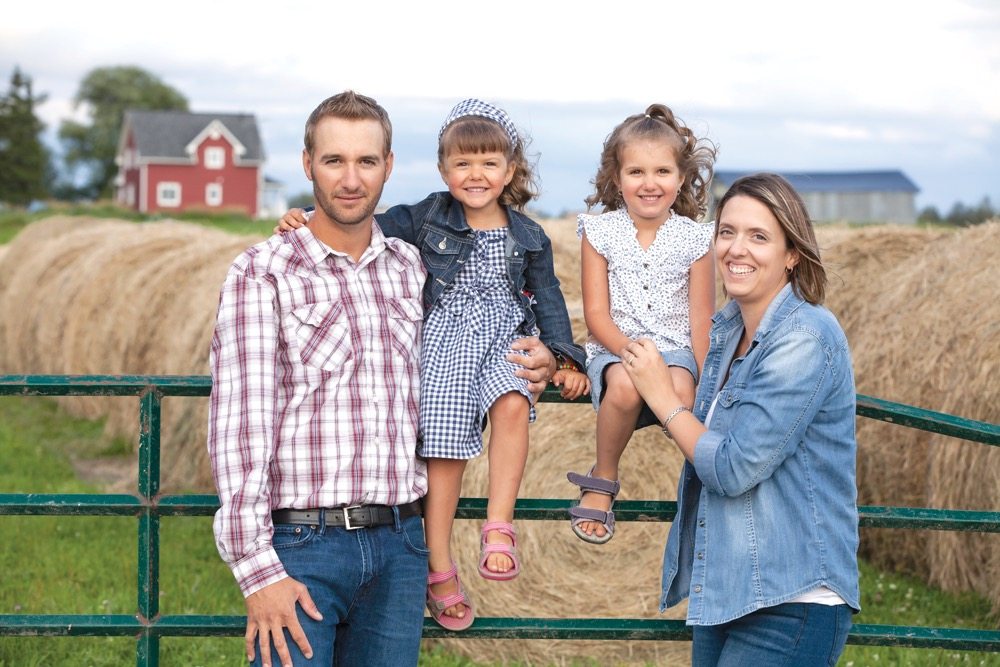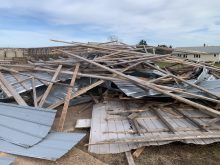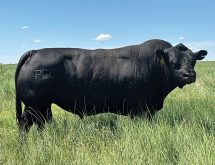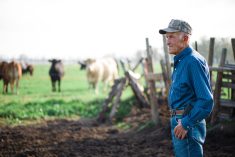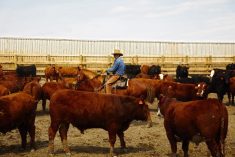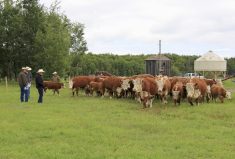Ontario cattlemen and the province have begun several programs to encourage more farmers to start raising beef in northern Ontario — where it is colder and the land is more suited to bush and cattle than corn and soybeans. Interest from producers considering a move north has been gaining momentum, and in mid-August 2017, the Beef Farmers of Ontario (BFO) hosted a group of 18 people who wanted to explore this opportunity by visiting northern farmers, some who were born there, and others who were newer to the north.
The Desrochers Farm
Read Also
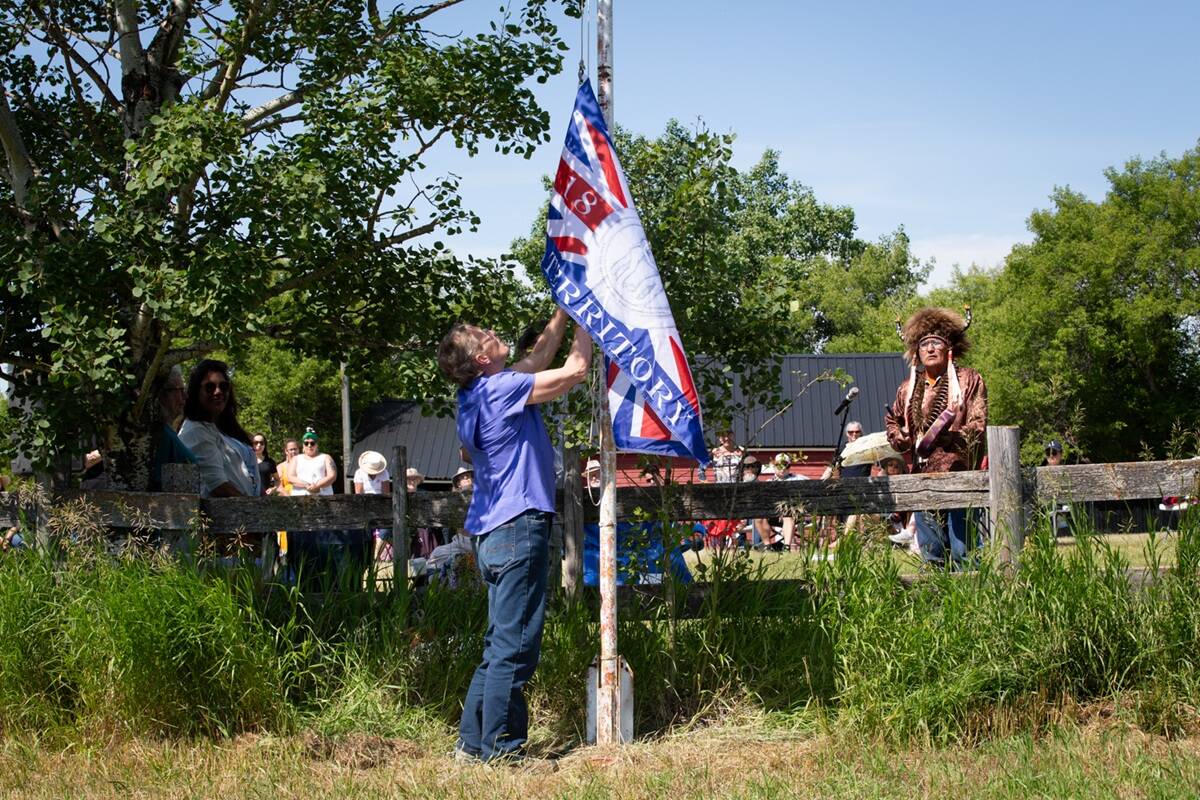
Treaty Land Sharing Network expands reach in Saskatchewan and Alberta
The Treaty Land Sharing Network, which connects land holders with First Nations and Metis people, has expanded since it began in 2018
Jason Desrochers runs 230 cows, 30 replacement heifers and 200-plus backgrounding calves at Val Gagné, an hour south of Cochrane and an hour east of Timmins. He’s the third generation in his family to farm land originally bought by his grandfather in 1928.
His father introduced Herefords, Shorthorns and a few Angus but since the 1990s the herd has been pretty much Simmental and Charolais with a bit of Limousin for a three-way cross, especially for calving the heifers. Today they are again introducing Angus and keeping some of those three-way cross heifers.
“We sell our cattle at Brussels and they do well. People know our cattle and what they will do.”
He crops with his brother and they sell all the grain they grow while his herd is wintered on hay and haylage. He says the Simmental-Charolais crosses frame out nicely with a decent weight under this regime.
Even though the climate is wet, it’s not severely cold. And, as he puts it, the seasons are well defined, but the winters are not bad.
“The weather is actually not very hard on livestock.”
As long as cattle have windbreaks they do fine overwintering in the bush.
And there’s no shortage of bush. Desrochers clears a little every year with some support from the Northern Ontario Farm Innovation Alliance (NOFIA) that administers a land-clearing research project.
“We’ve been doing this for about 10 years. Every year you do 10 acres, so after 10 years you have 100 acres of pasture carved out of the bush,” he says. The forage production increases with each year of cattle use.
They don’t bale graze fearing there might be too much mud on their clay soils, or too much snow for the cattle to nose through to get at the hay or haylage bales.
“So we feed every day, using a bale shear on the front of our tractor and spread each bale out on the snow. In the fall when the ground is mud, we spread the hay on higher ground,” he says.
They grow all their own hay made up of trefoil, timothy, red clover and mixed grasses. Last year they took off about 1,700 bales wrapped for haylage and about 4,000 total hay bales.
He and his brother grew 230 acres in barley for cash grain and 450 bales of straw. “All of those acres are under-seeded, which will benefit the beef operation,” he says.
They had another 115 acres in canola which got seeded late because of the wet spring and was frozen by an early fall frost.
“Our cows (were) grazing the canola for fall pasture and it extended our feed — not that we really need it because we have lots of hay, but they are eating less hay and have a lot of bedding. They eat what they want and trample the rest, so we can plow it under next year and put barley in — and underseed it as well. We had the canola plants tested to make sure the nitrate levels weren’t too high. The tests came back safe so we put the cows in there to graze.”
The heifers calve in late March and April when Desrochers has more time for them. Four barn cameras stream to his phone making it easy for him to monitor them at all times. The cows calve in May/June on pasture. Usually the weather is good enough by then that they calve on their own with minimal assistance.
“Last year was wet, however, and we worked quite hard during calving. It was the wettest spring my dad can ever remember.”
The calves get a farm tag and an RFID tag. “We also castrate the bull calves,” he adds.
Other producers are growing corn for silage but Desrochers feels it is still a risky crop for his area.
“Even barley can be hard to get harvested. The one thing that consistently grows is grass. We never get short on grass; we rarely have a drought. We always have lots of hay and pasture. I am 38 and have been farming alongside my dad my whole life, and I can remember only two dry years in all that time,” he says.
“Southern Ontario and out west has a lot more drought than we have. I think drought can be more devastating than anything else when you have cattle. This area has lots of grass, greenfeed, and windbreaks. You don’t have to fight the weather. You can just let the cattle be out there doing what they do best,” he says.
“It’s fine to grow crops in southern Ontario, or out west on the prairies. They do a great job. But in the northern areas that are similar to us, they grow cattle — which is what they should be growing,” he explains.
“Northern Ontario is a great place to raise cattle because you can put a lot of land together to do it. In southern Ontario I am amazed at how many roads there are, and the traffic. Farms are small and many farmers have little places here and there. Our farm has close to 3,000 acres in one place (3,500 acres in all), with no neighbours, no traffic,” he says.
The Gordanier Farm
Andrew Gordanier and his wife Janet moved to this area a couple of years ago from Dufferin County in southern Ontario, to lease what had been the Agriculture Canada research farm near Kapuskasing.

“This farm closed in the spring of 2013; no one was on it for a couple of years. We got here in the fall of 2014 as part of the Ontario Cattleman’s Association’s Northern Beef Expansion initiative,” he says. (The association has since changed its name to Beef Farmers of Ontario.)
“I learned about that initiative because my father was president of the association at that time. I didn’t even know where Kapuskasing was before that, just that it was up north somewhere. It’s about 800 kilometres north of the farm where I grew up. It’s a totally different world up here, with different soil, different climate, different growing season and community. It was like immigrating to another country!”
It took some getting used to, but some of the projects Andrew has been working on include beef production, lead-follow grazing with sheep and cattle, bale grazing, and experimenting with different varieties of fruits and vegetables to see which ones work best in this climate. Andrew is a partner in Kapuskasing Meats and raises pork, chicken and beef sold through this local company.
Janet is most interested in the sheep and Andrew takes care of the cattle. “This enables us to work together and still have our own thing — we are each an expert in our own area,” he says.
“The thing I like best about this northern area is that it is so well situated for ruminant livestock production — sheep and cattle. Grass grows very well. We are north of the 49th parallel so the days in the summer are very long. It stays fairly cool so it’s not unusual to have single-digit temperatures at night all summer, with daytime temperatures in the low 20s. The grass stays vegetative for a very long time, with many good cool season species,” he explains.
“It’s a little wetter here than what I was used to, but the moisture is welcomed, for our grass.
“The clay soils are a bit of a challenge, but it’s more just a learning curve for me because it’s good ground to work with. It holds moisture longer, but if we do get into some dry weather it also takes longer to get wet again,” he says.
The other challenge was being a long way from most of their suppliers.
“Our closest suppliers — equipment dealerships, grain, fertilizer, etc. — are four hours away. We were used to going to grab parts and supplies just an hour away. But the dealerships here are well versed in accommodating us, whether sending parts on the bus or some other way to get them to us as soon as they can,” he says. It just takes more planning.
“Kapuskasing, the community near us, has 10,000 people and is well serviced for a community of that size. There’s a lot of mining and forestry here and we use a lot of the same service providers for basic parts. I don’t use John Deere filters in my John Deere tractors; we buy filters through the local supplier and adapt them to work. If it’s something we know is not available locally we make sure we order it ahead of time.”
His cow-calf herd consists of 200 cows, mostly Angus and Angus cross. The herd is mostly Black Angus with a few Reds and some mixed breeds. About half the calves are backgrounded and sold as yearling stockers.

“We finish the other half and direct sell them as beef here at the farm through Kapaskusing Meats, which is a company we started here a year ago.” It’s been very well received by the community and surrounding region. This area is underserviced in terms of food products, so this was an opportunity to supply locally raised meat.
“We also raise sheep and milk them for the cheese plant here in town. Our flock produces milk, lamb and wool. We milk seasonally. We also have a few Berkshire sows and raise pork for our own store. We do chickens in the summer, and market those through our meat company as well,” he says.
“We’ve been referred to as pioneers, but we’re not the only people who are farming here. People have tried to farm this region for a long time. It’s one of the largest agriculturally farmable areas in North America that is not yet being farmed.”
There are some drawbacks when it comes to raising crops, however.
There are fewer than 100 frost-free days annually which puts severe limitations on what can be grown.
“Our primary focus is ruminant livestock and forage production,” says Gordanier. “I do grow some oats and barley for silage. It doesn’t matter if it freezes too early to harvest as grain. We had hard frost this year on the 13th of August, which would put the kibosh on most crops.”
He sees a real opportunity for livestock in this region largely because of the amount of land that is available combined with a climate that is well suited to producing beef on plentiful grass.

